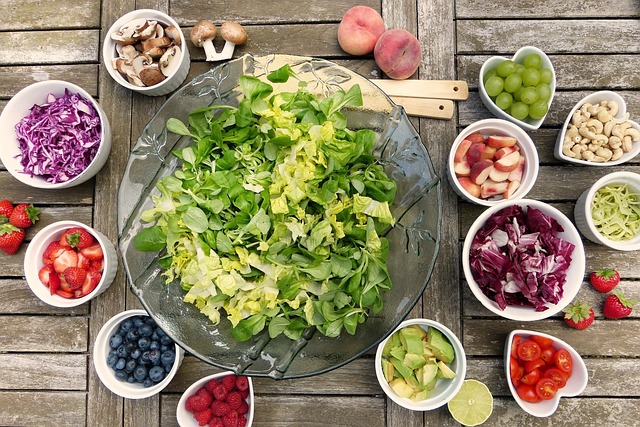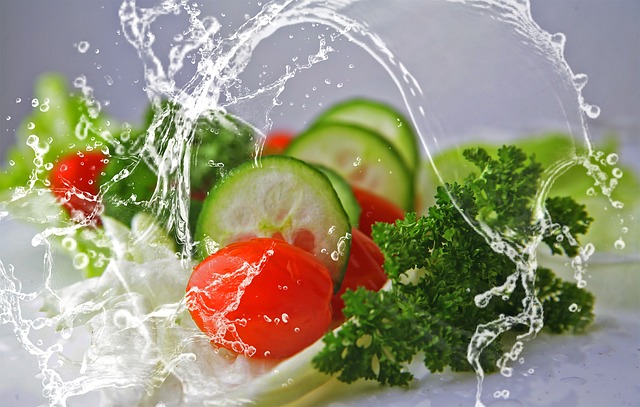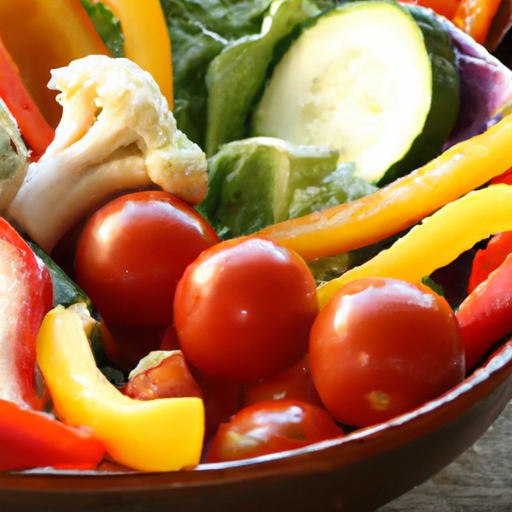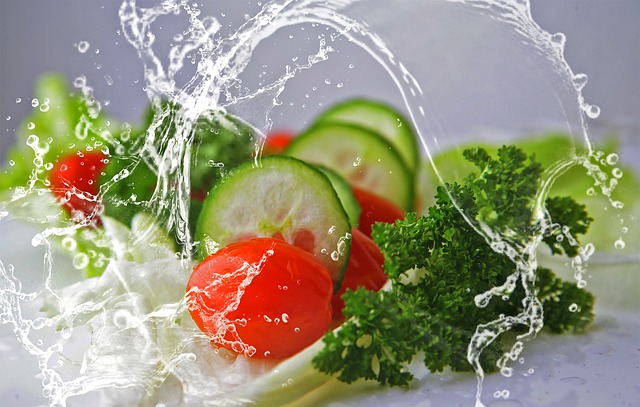So you’ve been considering making the switch to a vegetarian diet? That’s great! Not only is it a healthier option, but it’s also a more ethical and environmentally friendly choice. But where do you start? Well, don’t worry, I’ve got you covered. In this article, we’ll discuss some practical tips and tricks to help you transition smoothly and successfully to a vegetarian lifestyle.
First things first, it’s important to educate yourself about the different types of vegetarianism. There’s the lacto-ovo vegetarian diet, which includes dairy products and eggs, and the vegan diet, which excludes all animal products. Understanding these distinctions will enable you to make informed choices and tailor your transition to suit your individual needs and preferences.
Next, take it slow and start by gradually cutting out meat from your diet. You don’t have to go cold turkey (pun intended) right away. Begin by having a few meat-free days each week and gradually increase them over time. This will give your body and taste buds a chance to adjust to the new diet.
In addition, it’s important to diversify your meals and experiment with different vegetarian recipes. Explore the wide variety of fruits, vegetables, whole grains, legumes, and plant-based proteins available. This will help ensure that you’re getting all the necessary nutrients your body needs.
Stay tuned for the rest of this article, where we will delve deeper into these tips and provide you with more insights and guidance on how to successfully transition to a vegetarian diet. Whether you’re doing it for health, ethical, or environmental reasons, making the switch is an exciting and rewarding journey that I’m sure you’ll appreciate. Making the decision to transition to a vegetarian diet can be both exciting and overwhelming. Whether you are motivated by health reasons, ethical concerns, or environmental factors, understanding how to make a successful transition is key. This article will guide you through the process, offering practical tips and insights to help you navigate this new dietary path.

Understanding the Vegetarian Diet
What is a vegetarian diet?
A vegetarian diet is a plant-based eating pattern that excludes the consumption of meat, poultry, seafood, and any products derived from animals. However, there is flexibility within the vegetarian diet, and different individuals may choose to include or exclude certain animal-based products based on their personal preferences and beliefs.
Different types of vegetarian diets
There are different variations of vegetarian diets, each allowing for different degrees of inclusion or exclusion of animal products. The main types of vegetarian diets include:
-
Lacto-ovo-vegetarian: This is the most common type of vegetarian diet, which includes dairy products and eggs along with plant-based foods.
-
Lacto-vegetarian: This diet excludes eggs but includes dairy products.
-
Ovo-vegetarian: This diet excludes dairy products but includes eggs.
-
Vegan: A vegan diet eliminates all animal-based products, including dairy, eggs, and honey, and relies solely on plant-based foods.
Benefits of adopting a vegetarian diet
There are numerous benefits to adopting a vegetarian diet. Some of the key advantages include:
-
Improved health: A well-planned vegetarian diet can provide all the necessary nutrients while reducing the risk of chronic diseases such as heart disease, obesity, and certain types of cancer.
-
Environmental sustainability: The production of meat and animal products has a significant impact on the environment. Switching to a vegetarian diet can reduce greenhouse gas emissions, conserve water, and decrease deforestation.
-
Animal welfare: By eliminating the consumption of animal products, individuals contribute to the welfare and ethical treatment of animals.
Preparing for the Transition
Educating oneself about vegetarianism
Before embarking on a vegetarian diet, it is essential to educate yourself about the principles, benefits, and potential challenges associated with this lifestyle. Read books, articles, and scientific studies to gain a comprehensive understanding of the vegetarian diet.
Determining personal motivations for transitioning
Clearly defining your motivations for transitioning to a vegetarian diet will help you stay committed during the transition process. Whether it’s for health, ethical, or environmental reasons, understanding your why will provide a strong foundation for your journey.
Clearing out non-vegetarian foods from the pantry
To set yourself up for success, take the time to clear out your pantry and refrigerator of any non-vegetarian foods. This will eliminate temptation and ensure that your new diet is stocked with fresh, plant-based ingredients.
Gradual Approach vs. Cold Turkey
The pros and cons of a gradual transition
A gradual transition to a vegetarian diet involves slowly phasing out animal products from your meals over a period of time. This approach allows your taste buds and digestive system to adapt gradually, reducing the likelihood of experiencing cravings or withdrawal symptoms. However, it may be challenging to sustain motivation and discipline during this slow transition.
Benefits of a sudden shift to a vegetarian diet
Alternatively, some individuals prefer a sudden shift to a vegetarian diet, cutting out all animal products at once. This approach requires a strong commitment and may result in temporary withdrawal symptoms or cravings. However, it offers a quick and decisive way to embrace the vegetarian lifestyle.
Choosing the right approach for oneself
Deciding between a gradual or sudden transition is a personal choice. Consider your personality, willpower, and lifestyle when determining the best approach for you. Remember, there is no one-size-fits-all method, so choose the approach that feels most aligned with your goals and preferences.
Understanding Nutritional Requirements
Identifying potential nutrient deficiencies
While a vegetarian diet can be nutritionally adequate, there are certain nutrients that require special attention. These include protein, iron, calcium, vitamin B12, and omega-3 fatty acids. Understanding the importance of these nutrients and identifying potential sources is essential for maintaining a balanced vegetarian diet.
Ensuring a balanced vegetarian diet
To meet your nutritional needs, focus on incorporating a variety of fruits, vegetables, whole grains, legumes, nuts, and seeds into your meals. Strive for a diverse and colorful plate to ensure you are obtaining an array of essential vitamins, minerals, and antioxidants.
Exploring plant-based protein sources
Protein is an essential macronutrient, and it is essential to include adequate protein sources in your vegetarian diet. Fortunately, there are plenty of plant-based protein sources available. Beans, lentils, tofu, tempeh, quinoa, nuts, and seeds are excellent options that can easily be incorporated into your meals.

Meal Planning and Recipe Research
Planning well-balanced vegetarian meals
Meal planning is essential for successfully transitioning to a vegetarian diet. Take some time each week to plan your meals, ensuring that each one includes a variety of vegetables, whole grains, plant-based proteins, and healthy fats. This will help you stay on track and prevent last-minute unhealthy food choices.
Finding and experimenting with vegetarian recipes
The internet is a treasure trove of vegetarian recipes. Spend some time exploring recipe blogs, websites, and cookbooks dedicated to vegetarian cuisine. Experiment with different flavors, cuisines, and cooking techniques to keep your meals exciting and enjoyable.
Adding variety to the diet for long-term sustainability
One of the keys to long-term success on a vegetarian diet is to embrace variety. Explore different types of vegetables, grains, and plant-based proteins to keep your meals interesting and prevent boredom. Incorporate seasonal produce and try new recipes regularly to continually expand your palate.
Navigating Social Settings
Informing family and friends about the transition
Let your family and friends know about your decision to transition to a vegetarian diet. Explain your motivations and educate them on what it means to follow a vegetarian lifestyle. Their support and understanding will make social settings and gatherings more comfortable.
Communicating dietary preferences at restaurants
When dining out, it is essential to communicate your dietary preferences to the restaurant staff. Do not hesitate to ask questions about menu options, ingredient lists, and potential substitutions. Most restaurants are accommodating and will be willing to modify dishes to suit your needs.
Coping with potential criticism or lack of understanding
Unfortunately, not everyone will understand or support your decision to become a vegetarian. Be prepared for potential criticism or skepticism from friends, family, or colleagues. Stay confident in your choice, educate others when appropriate, and do not let negativity discourage you.

Managing Cravings and Withdrawal
Identifying common non-vegetarian food cravings
Cravings for non-vegetarian foods may arise during the transition period. Common cravings include meat-based dishes, cheese, or desserts containing animal products. Understanding these cravings and their triggers will help you find suitable vegetarian alternatives.
Replacing non-vegetarian favorites with suitable alternatives
To satisfy cravings for non-vegetarian foods, explore vegetarian alternatives that mimic the taste and texture of your favorite dishes. For example, tofu can be used as a substitute for meat, and plant-based cheeses can be used in place of dairy cheese. By finding suitable alternatives, you can still enjoy your favorite flavors while sticking to your vegetarian diet.
Dealing with temporary withdrawal symptoms
During the initial transition, you may experience temporary withdrawal symptoms such as fatigue or mood swings. Stay hydrated, prioritize self-care, and ensure you are consuming a balanced vegetarian diet to minimize these symptoms. Remember that they are temporary and will subside as your body adjusts to your new eating habits.
Seeking Support and Guidance
Joining vegetarian or plant-based communities
Connecting with like-minded individuals is an excellent way to gain support and guidance during your transition. Join online vegetarian or plant-based communities, where you can share experiences, ask questions, and find motivation from others on a similar journey.
Finding online resources and recipe blogs
Numerous online resources provide valuable information, recipes, and tips for transitioning to a vegetarian diet. Look for reputable websites, blogs, and social media accounts dedicated to vegetarianism. These platforms can provide inspiration, guidance, and recipes for every step of your journey.
Seeking professional guidance if necessary
If you have specific dietary concerns or medical conditions, it may be beneficial to seek guidance from a healthcare professional or a registered dietitian. They can provide personalized advice and ensure that your vegetarian diet meets all your nutritional needs.

Staying Committed and Overcoming Challenges
Reminding oneself of personal motivations for transitioning
When faced with challenges or temptations, it’s crucial to remind yourself of the reasons why you chose to transition to a vegetarian diet. Whether it’s for your health, the environment, or animal welfare, keeping your motivations at the forefront of your mind will help you stay committed and focused.
Dealing with peer pressure or temptation
Social situations or peer pressure may present challenges when transitioning to a vegetarian diet. Prepare yourself with responses to common questions or criticisms, and focus on the positive impact you are making through your dietary choices. Surrounding yourself with supportive individuals can also help you stay strong in the face of temptation.
Exploring diverse vegetarian cuisines
Vegetarian cuisine is incredibly diverse and offers countless opportunities for culinary exploration. Experiment with different vegetarian recipes, international cuisines, and plant-based cooking techniques to expand your palate and maintain enthusiasm for your new eating habits.
Conclusion
Transitioning to a vegetarian diet requires dedication, knowledge, and a willingness to try new things. By understanding the principles of vegetarianism, planning your meals, seeking support, and addressing potential challenges, you can successfully make this dietary shift. Embrace the benefits of a plant-based lifestyle, enjoy the variety of flavors and cuisines available, and take pride in your compassionate and sustainable dietary choice.

